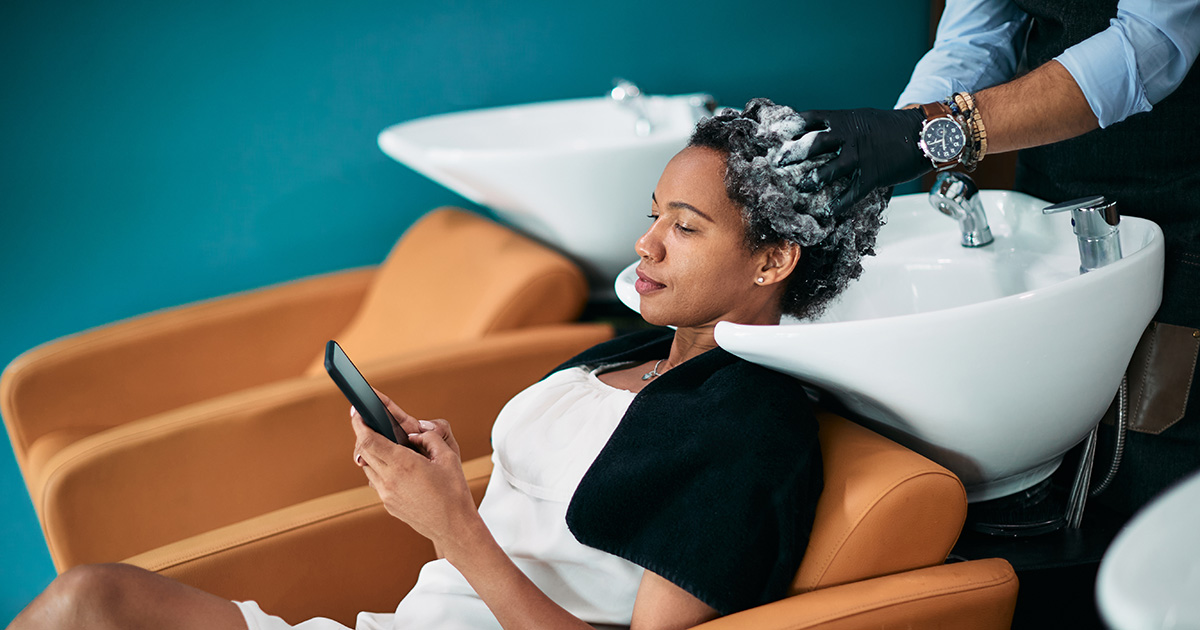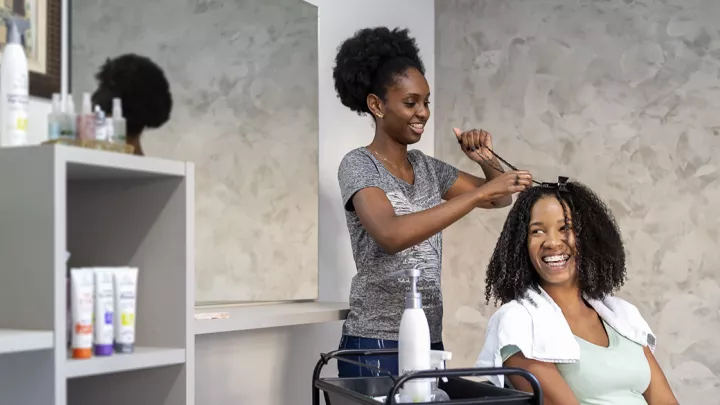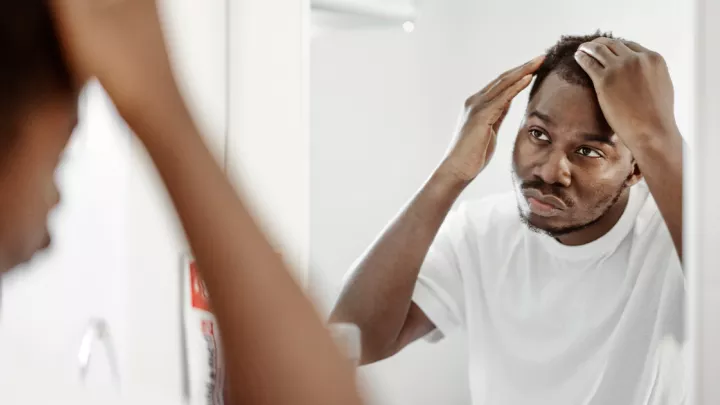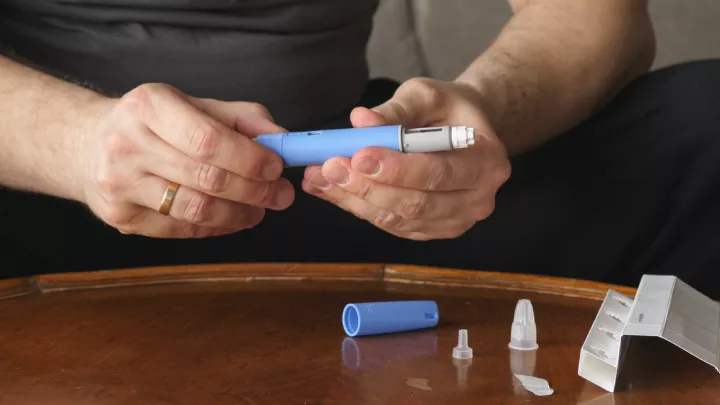Healthy hair care for Black women: Advice from a dermatologist

Recent studies are looking at the potential links between specific hair care product use to overall health and cancer risks for Black women: much more than just the possibility of visible and damaging side effects.
“As a dermatologist for 30 years, I have seen many adverse reactions on the skin and scalp to commonly used hair products,” says Kristie Hayes, MD, Nebraska Medicine dermatologist. “These studies are extremely important to know about as lifelong consumers of different hair care products whose long-term safety is being appropriately questioned and reevaluated.”
The National Institute of Environmental Health Sciences (NIEHS), a division of the National Institutes of Health (NIH), is committed to understanding the role of environmental exposures in human disease.
Articles on Hair Care and Black Women’s Health and the Women’s Health Awareness initiative from the NIEHS recommend that the use of hair straighteners, chemical relaxers, and permanent hair dyes be reduced, though not necessarily discontinued altogether, until more information is available.
Historically, there has been societal pressure to conform to European standards of beauty of straight hair. In the early 1900s, thermal (heat) styling was popular, but was later replaced by permanent hair relaxers, which are now used widely.
There have been well-documented discrimination against natural hair textures in hiring, promotion, in schools, and in sports. The CROWN Act, which originated in Congress, was passed by the Nebraska Legislature in 2021 to raise awareness and end natural hair discrimination in the workplace.
Healthy hair is beautiful hair
Beauty and uniqueness are found in the hair’s body, flexibility and variety. Whether curly, straight, coiled or wavy, caring for black hair requires patience and an individualized approach.
“I recommend professional assistance when using chemical hair applications,” says Dr. Hayes. “I often see injury, hair breakage, hair loss, and inflammation on the scalp. There are so many products on the market now. If you need help figuring out what’s best for you, ask for guidance. Seeing a hair care professional regularly will help keep your hair conditioned, trimmed and healthier.”
Curly hair tends to be drier due to the curl pattern
Hydration and moisture are critical. Finding the right products to address hydration is essential for healthy hair and can also reduce breakage. The difference between new growth and previously relaxed hair is a stress point. Chemical use and heat can contribute to dry hair and breakage, so the longer you can extend the time between chemical straightener use, the better.
How you style and treat your hair is your choice, but be aware of the risks
Whether temporary or permanent, how you treat your hair is your choice. But be aware that certain techniques and how frequently you use them can contribute to problems.
There are risks to chemical straighteners and permanent hair dyes to consider:
- Thermal burns and injury on the skin and scalp
- Overheating the hair itself
- Chemical irritation or burns on the skin or scalp
- Skin irritations or allergic contact dermatitis
- Chemical relaxer or permanent dye overuse, causing hair breakage or loss
- Developing an allergy to the chemicals in hair dye over time
Learn more about the risks of hair dyes and straighteners.
To reduce the risk, keep the temperature low on your styling tools and avoid using heating tools more than once per week. Using semi-permanent, gradual or temporary hair dye can be less damaging than permanent dyes.
More key ways to protect your hair:
- Deep condition regularly and use a leave-in conditioner
- Clean the scalp regularly with a mild shampoo and thoroughly rinse out hair products
- Keep natural hair moist and use hydrating products
- Detangle hair when wet. Start from the ends and gently work your way up to the scalp
- Change up your hair care routine from time to time to protect your hair, scalp and skin around it
Consider protective alternatives that require less hair manipulation, such as:
- Dreadlocks allow the hair to rest due to a lack of tension and chemical heat applications
- Braids, cornrows and extensions are protective hairstyles. Make sure to change the pattern regularly to reduce breakage and skin inflammation along the hairline that can lead to permanent hair loss
- Wigs should be used with a satin cap to reduce friction and breakage
Everyone has a unique hair pattern and texture, and responses to hair products may differ from person to person. “Talk to a dermatologist if you have itching, irritation or scaling on your scalp,” says Dr. Hayes. “Don’t be afraid to ask for help if you have concerns.”







